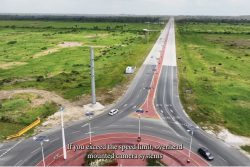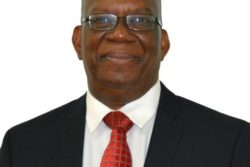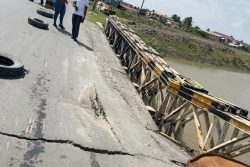Fully supportive
This column is the last in a series of nine successive columns devoted to addressing the United Nations (UN) Post-2015 Development Agenda and its related Sustainable Development Goals (SDGs). It focuses on operational and implementation concerns that I have hinted at, if the SDGs were to become the framework for promoting Guyana (and Caricom’s) long-term development.
 In the previous two columns I had discussed another concern, which was the unenthusiastic manner in which the framing/designing of the SDGs at the global UN level, has entered into local discussions of Guyana’s long-term development, by all the key stakeholders: resident UN offices, lead line-ministries, and civil society organisations. Nonetheless, as previously indicated, despite these concerns I remain fully supportive of the SDGs as an effective framework for promoting Guyana (and Caricom’s) long-term development. I believe there is a clear strategic advantage to Guyana’s enthusiastic embrace of the SDGs at this point in time, particularly given that it is a small state, with a recently elected government that is facing illegal territorial claims.
In the previous two columns I had discussed another concern, which was the unenthusiastic manner in which the framing/designing of the SDGs at the global UN level, has entered into local discussions of Guyana’s long-term development, by all the key stakeholders: resident UN offices, lead line-ministries, and civil society organisations. Nonetheless, as previously indicated, despite these concerns I remain fully supportive of the SDGs as an effective framework for promoting Guyana (and Caricom’s) long-term development. I believe there is a clear strategic advantage to Guyana’s enthusiastic embrace of the SDGs at this point in time, particularly given that it is a small state, with a recently elected government that is facing illegal territorial claims.
Caricom (Guyana): specific concerns
While I have several operational and implementation concerns, space only allows for consideration of the five indicated below:
First, although the SDGs, their targets, and indicators of compliance, are clearly spelt out in the UN Post-2015 Develop-ment Agenda, I believe that they should be re-specified/rephrased, wherever possible, in an agreed Caricom-specific manner. The reason for this recommendation is that the SDGs as they stand, are expressed in broad global terms. To promote local implementation, I believe it is the responsibility of countries/regions everywhere to translate them, in a transparent manner, into their specific cultural and development environments.
Indeed I recall participating in a similar regional exercise back in the 2000s. That effort was sponsored by the UN, and was aimed at re-specifying the Millennium Development Goals (MDGs) into Caricom-specific MDGs. I am therefore recommending that this task is repeated for the SDGs.
Floors or ceilings
Second, if the process of devising a set of Caricom-specific SDGs as advocated above, was to be followed, the Region could find itself at times in a position to set a higher level of ambition than that reflected in the UN-agreed SDGs. In the case of the SDGs, there could be instances where it would be better to treat specific SDG targets and indicators of compliance as ceilings of attainment rather than floors of achievement. This could enhance the entire Region’s standing in the global community.
Thus I recall, it was agreed that the primary education MDG at the regional level, would be re-stated as the attainment of universal secondary education, since primary education was considered too low as a regional ambition.
Means of implementation
Third, if as recommended, the SDGs constitute the framework for Guyana (and Caricom’s) long-term deve-lopment, it is vital that these are framed in the context of well-designed and agreed-to means of implementation (MoI) at the global, regional, and national levels. I have already assessed this issue at the global level, in the context of the appraisal of the July 2015 Addis Ababa Conference on Financ-ing the UN Post-2015 Development Agenda prior to the recent UN summit.
As that earlier discussion had noted, the costs of promoting the SDGs are expected to be very high. Additionally, they would require major changes in global policies, such as capacity building; pro-development trade; technology development and transfer from rich to poor; and, financing, (especially taxation and other mandatory forms of domestic and international resource mobilisation). Readers should also note, in order to fund infrastructure during the period 2016-2030, it is currently projected this would cost as much as US$7 trillion per year! Indeed, global safety-net requirements alone, are projected to cost US$66 billion per year for the same period.
Further, the resources required to fund the SDGs implementation would have to be swiftly acquired, given the pressing timelines of the Post-2015 Development Agenda. The requirement at this stage, is clearly for both 1) more resources to be acquired from existing sources, and 2) the identification of new and innovative sources. I have previously discussed some of the latter issues, such as international taxation and the recovery of public assets, unlawfully acquired.
Transparency, monitoring and reporting
The fourth operational and implementation concern relates to the global commitment made at the UN summit to achieve transparency and accountability in the SDGs delivery mechanisms. However, the question that arises most frequently is how can we concretely assure that governments and their inter-governmental authorities, which are responsible for implementing policies in pursuit of the goals, meet this commitment to transparency and accountability? Personally, I believe no such assurance is possible. The best chance, therefore, of making the authorities live up to their commitments, is greater civic awareness, along with intensive public participation in all available social and political processes in Guyana and Caricom.
The fifth and final concern mentioned here, is perhaps the most crucial. It centres on the consideration of how strong the monitoring, review, verification, and reporting (MRVR) measures will be when implementing the Post-2015 Development Agenda and the SDGs. This question raises a number of related subsidiary questions: 1) Is there follow-up to the MRVR process and what form does it take? 2) Will the MRVR process be state-led; what is the role of civil society in the process? 3) Are the targets and indicators of compliance rooted in evidence- based research? 4) Which authority will be ultimately held responsible for implementation of the SDGs? Regrettably, none of these questions can be definitely answered at this stage.
This concludes the discussion of Guyana (and Caricom) in light of the global Post-2015 Development Agenda and the SDGs. As stated above, given Guyana’s circumstance, a small state with a recently elected government facing illegal territorial claims, one cannot underestimate the strategic importance of its enthusiastic embrace of all UN endeavours of ambition, like the SDGs.







